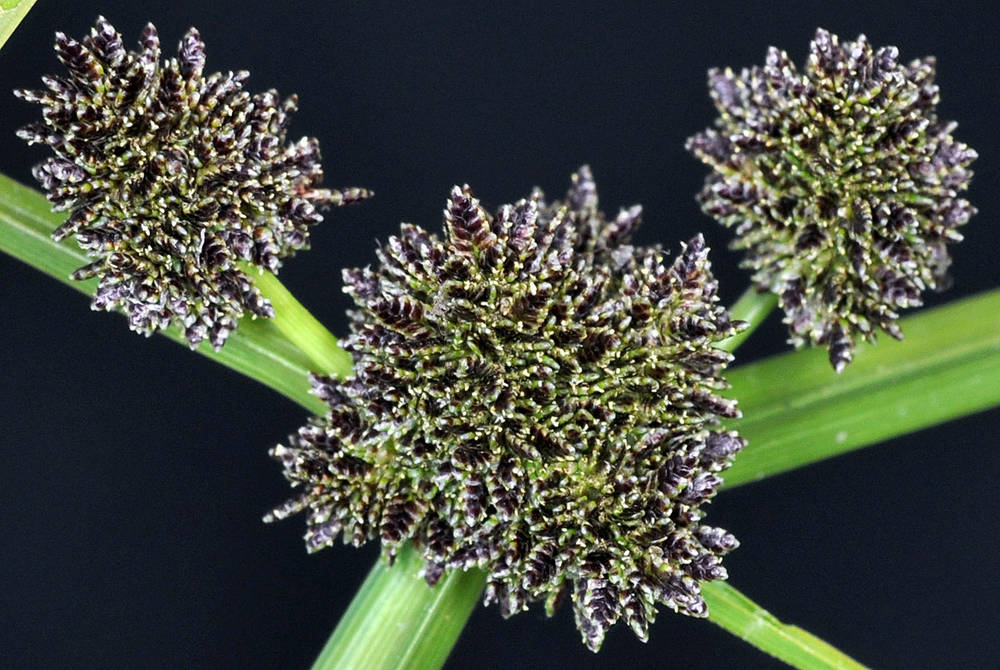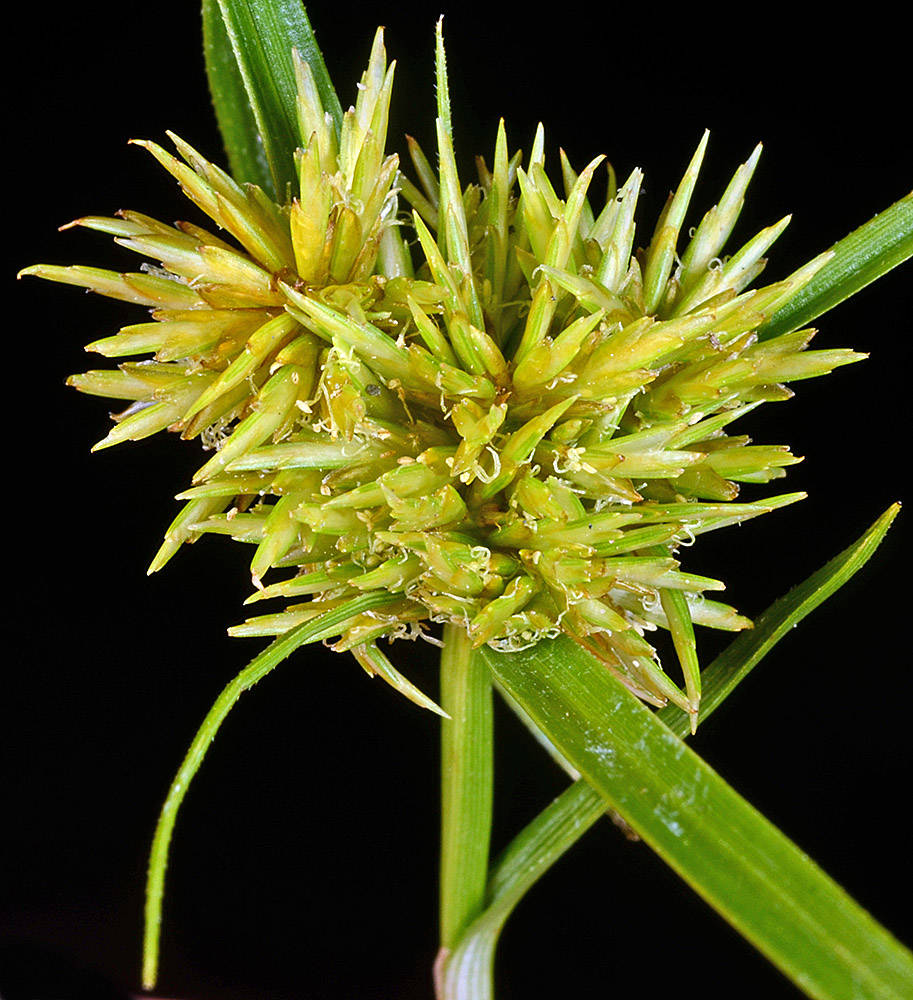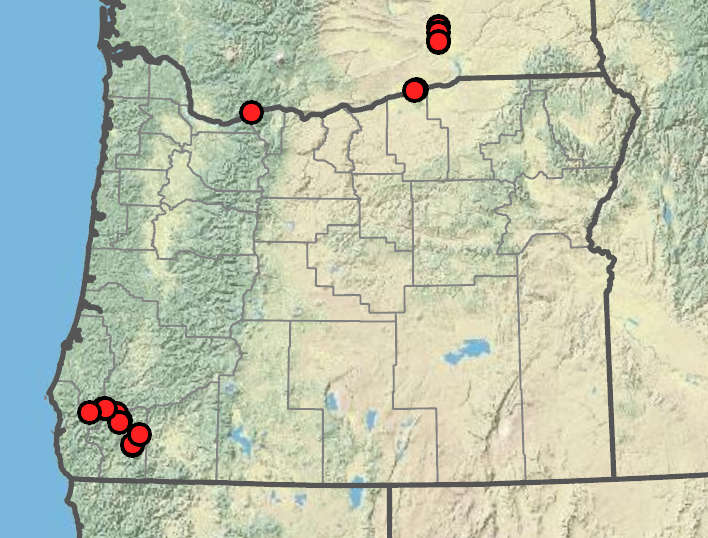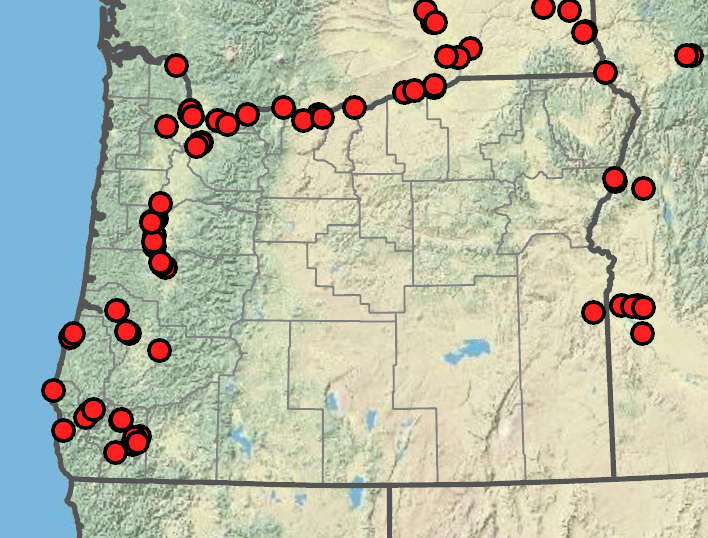Cyperus difformis
Cyperus strigosus
Asian flatsedge
false nutsedge
1–15, trigonous, 7–30 cm × 1.2–2.5 mm; soft (flattened in pressing).
basally swollen and corm-like, trigonous; (1)20–40(90) cm × 1–6 mm.
(2)7–22 cm × 2.2–4 mm.
(10)20–40 cm × 1–4(8) mm.
clusters head-like; dense, 7–17(35) mm wide;
rays (0)1–5, 2–32 mm; longest inflorescence bract erect or nearly so, appearing as continuation of culm; other bracts horizontal to ascending.
clusters loosely cylindric, 1–4; (6)10–28(50) × 10–40 mm;
rays (0)3–6(8), 0.5–7(25) cm;
inflorescence bracts ascending at 30–45°.
30–120, oblong-ellipsoid, compressed; (2)3–5(6) × 0.8–1.2 mm; greenish brown to purplish brown; floral scales (6)12–20(30), obovate to orbiculate, 0.6–0.8 × 0.6–0.8 mm, stramineous to deep purple with clear margins; mid-stripe greenish, stramineous, or purplish;
lateral ribs 0; medial ribs 3;
apex mucronulate.
(5)12–50, linear-lanceoloid, compressed, 5–30 × 0.6–0.9 mm;
rachilla more or less deciduous;
wings 0.4–0.5 mm wide; floral scales more or less deciduous, 3–11, appressed, oblong-obovate, 3.2–4.5(6) × 1–1.8 mm, stramineous to pale brown with green mid-stripe;
lateral ribs 3–4; medial ribs (1)3;
apex more or less acute, overlapping lower 25–50% of next scale.
anthers 0.1 mm;
styles 0.1 mm;
stigmas 0.1–0.3 mm.
anthers 0.3–0.5 mm;
styles 1–2 mm;
stigmas 3–4 mm.
obovoid-ellipsoid, 0.6–0.8 × 0.3–0.4 mm (as long as subtending scale);
base cuneate.
more or less stipitate, narrowly oblong; (1.5)1.8–2.4 × 0.5–0.6 mm.
Cyperus difformis
Cyperus strigosus
Disturbed, sandy or muddy soils, sand bars, roadsides, sometimes on serpentine. 100–400 m. Sisk. CA, ID; east to NJ, south to Mexico; South America; Africa, Australia, Eurasia, islands of the Pacific and Indian Oceans; Exotic.
Cyperus difformis is recognized by its tight heads of small spikes with unusually small scales. The first Oregon collection was made in 2004.
Lake shores and river margins exposed as water level falls, ditches, other disturbed wet soils, sometimes a weed in croplands. 0–600 m. BW, Col, CR, Sisk, WV. CA, ID, NV, WA; north to Saskatchewan, east to ME and FL. Native.
Cyperus strigosus is common in Oregon. Individuals that flower the first year are easily confused with C. erythrorhizos, C. esculentus, and C. odoratus. Cyperus erythrorhizos has shorter floral scales; C. esculentus has persistent floral scales; C. odoratus has subcylindric spikes.
Barbara Wilson, Richard Brainerd, Nick Otting
Barbara Wilson, Richard Brainerd, Nick Otting
- Local floras:
BC,
CA,
OR,
WA
- Local Web sites:
CalFlora,
CalPhotos,
Flora NW,
PNW Herbaria
WildflowerSearch
iNaturalist (observations)
USDA Plants Database
- LBJ Wildflower Center
- SEINet
- Plants of the World Online
- Encyclopedia of Life
- Wikipedia
- Google Image Search





